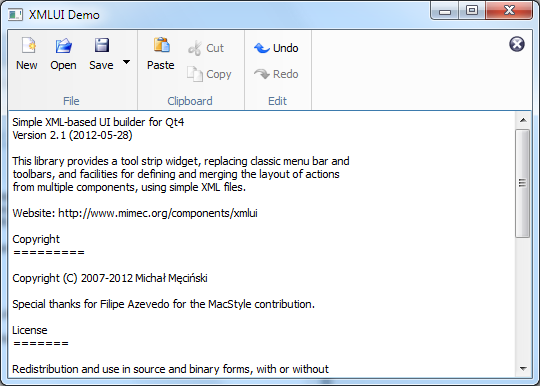Impressions from Minecraft
Before I get to the point, just a few updates. I just finished refreshing the components available on this website, so now they're finally all up to date. I also published some recent photos of Adam. He's growing and changing so quickly that it's hard to keep up :). Last but not least, I released version 1.0.2 of WebIssues some time ago with some minor fixes and improvements.
Why do I write about Minecraft? It's simply impossible to avoid it. I had a short adventure with the free Classic version in January, when Adam was still at the hospital. I knew I shouldn't even think about the full version, because I'd be stuck with it for a long time. I managed to forget about it until recently I bought May Payne III and I was looking for an online review. Then I accidentally found that an Xbox version of Minecraft is available. I didn't even finish playing Max Payne (which is great, by the way, almost as much as the original version was 12 years ago) and bought Minecraft. It's not hard to guess that it costed me a few nights with hardly any sleep.
I think that there are already a few dissertations about the Minecraft phenomena. A world made of blocks that you can freely dig and move around is simply every geek's dream. Games like Max Payne have great graphics and action, but it's sometimes annoying that you can't just get off the linear path and venture into the Sao Paulo favelas. Games like GTA don't solve the problem - you can go anywhere you want, but there's not much interaction with the world other than shooting people and running them over. In Minecraft there are no limits. You are a god in a digital world. Add to it a few zombies and retro style graphics and you have a recipe for success.
The Xbox version of Minecraft is still quite bit behind the PC version. It lacks enchanting, potions, a lot of biomes (there is only forest and desert, at least in my world) and structures like villages and strongholds. Hopefully they will add these features soon, but even as it is now, it's a lot of fun to play. The size of the world is limited to 1024x1024 blocks, but it's more than enough for a single player or even a few players. It took me quite a while to travel around the entire world using a boat. Also there is still a lot of bugs. It happened to me once that after saving the game deep underground and loading it again, I was moved to the surface, surrounded by three creepers. It was quite annoying :).
I could just as well buy the PC version, but I like to separate playing from working, so I prefer not to have any games on my laptop :). Not to mention the effect of having a big screen and surround sound. Mouse and keyboard is probably more comfortable for this type of game, but you can get used to the pad. At the moment I'm a little bit burnt out, and I can definitely use a break. Fortunately in a few days we're going to Germany to visit my wife's sister. Besides the Euro Championship is more important at the moment :). But Minecraft is definitely the kind of game that you want to keep returning to, especially when new updates will be released. Keep up the good work, Mojang!
- Read more about Impressions from Minecraft
- Log in to post comments

